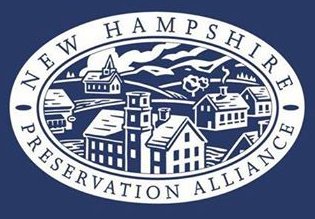Five Easy Preservation Engagement Ideas for Kids
Just because your children are on summer vacation doesn’t mean the learning has to stop! Are you looking for fun ways to teach your kiddos about preservation? Try these ideas for getting them interested in the preservation of historic buildings and the history of their communities. You can adjust the activities to be appropriate for different ages.
Federal Hill Fire Tower in Milford, NH is one of the state’s many historic places that are great for a summer road trip.
1) Take a walk or drive and look around your community for clues to its history. What do street names refer to? What do stone walls or foundations along trails or in open areas tell you about activity in the past? Stroll through older cemeteries and read the headstones. Ask kids to make a map of their property, neighborhood or town. Then talk to them about what they included. (This is a great thing to do every year, like a growth chart, to see how perceptions change.)
2) Explore some of the state’s fascinating historic places. Create a challenge to visit state historic sites or cultural venues like historic theaters, restaurants, or summer chapels. Get some exercise by hiking to some of the state’s many fire towers. Participate in the New Hampshire Historical Highway Marker quest.
3) For rainy days, provide book and movie lists with preservation connections. Here are just a few: In The Muppets, a devoted Muppet fan reunites the gang to help save the historic Muppet Theater. In Cars, Lightning McQueen and his big rig end are impounded overnight in Radiator Springs on Route 66. When the race is over, Lightning returns to the town to help put it back on the map. New Hampshire’s Moose Plate program has a fun coloring page featuring a moose to combat rainy day boredom. Our book store features titles ranging from Virginia Lee Burton’s The Little House (1942) to Mary Lyn Ray’s The House of Grass and Sky (2021). Check out on-line resources like the National Park Service’s Junior Ranger program: https://www.nps.gov/articles/hispresjuniorrranger.htm
4) Talk to kids about how many old buildings were planned with climate and weather in mind. How does the house face relative to the sun and prevailing winds? How do windows, awnings and other features keep the building warm or cool? What can be done to make the old place more energy efficient and comfortable? Discuss the concept of embodied energy: consider the labor and materials that were used in construction and care over time and how long it could take to replace that already-expended energy with a new energy efficient feature or brand-new building.
5) Look for ways to involve older kids in civic life. In Lancaster, there are seats for high school students on the planning board to add young voices to the conversation and connect young people to the future of their community. Participate in a town or park or cemetery clean-up or fix-up day. Talk to a new driver about the benefits of a “Moose Plate” conservation license plate and buy one or give one as a gift.

